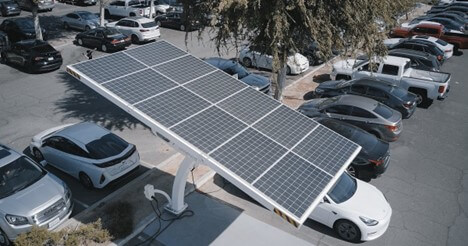Electronic waste (e-waste) is one of the fastest-growing environmental challenges in the world. From discarded smartphones to outdated medical devices, millions of tons of electronics end up in landfills every year. In 2022 alone, over 62 million metric tons of electronics were discarded, creating significant pollution risks. Many of these devices contain hazardous materials that can leach into the groundwater and soil. While recycling infrastructure does exist, it cannot keep up with this expanding problem.
At Sonic Manufacturing, we believe innovation and responsibility go hand in hand. This is why we are dedicated to delivering high-quality solutions that meet the stringent demands of the green technology industry. Printed circuit boards (PCBs) sit at the heart of nearly every device, making them a critical factor in reducing waste and creating more sustainable products. Let’s look closer at why we are the ideal partner for driving growth in this sector.
Why PCB Design Matters for Sustainability
PCBs aren’t just the backbone of electronics; they’re also one of the most resource-intensive components to produce. Poorly designed boards can lead to excess material usage, shorter product lifespans, and limited recyclability.
On the other hand, smarter design practices allow for longer product life cycles and material efficiency. Well-designed PCBs are more durable, reducing the need for frequent replacements, and optimized layouts use fewer raw materials. Furthermore, boards designed with disassembly in mind make it easier to recover valuable metals and components at end of life, something that the Sonic team considers from the get-go.
By designing PCBs with the full product lifecycle in mind, manufacturers can minimize waste and support a circular economy in electronics.
Smarter Design Strategies to Cut Waste
Optimize Layouts for Efficiency
One of the first aspects we consider is how to best optimize the layout of our PCBs. With thoughtful design, PCB layouts reduce unnecessary layers, copper usage, and energy consumption during manufacturing. An efficient design also lowers production costs, allowing customers to enjoy both sustainability and cost savings.
Design for Durability
Here at Sonic, we always use high-quality materials, protective coatings, and robust design practices. These elements extend the lifespan of our boards by making them stronger, thicker, and less likely to be affected by corrosion, dust, and environmental stressors. The longer a device can function without needing replacement, the less waste ends up in the landfill.
Prioritize Modular and Repairable Designs
Instead of designing boards that require replacing an entire unit when a single component fails, our team builds modular PCBs that make it easier to repair or upgrade specific parts. This approach keeps devices in circulation longer and significantly reduces e-waste.
Consider End-of-Life Early
Sustainable PCB design isn’t just about performance—it’s about planning ahead. Our team uses materials and assembly methods that facilitate recycling, such as valuable metals like gold, copper, and palladium (which are typically recovered rather than discarded), as well as thermoplastic substrates, lead-free solder, and halogen-free laminates.
The Bigger Picture: Innovation Meets Responsibility
Consumers, regulators, and businesses alike are demanding greener electronics. Smarter PCB design supports this shift by making devices more efficient, durable, and recyclable. As sustainability continues to drive purchasing decisions and industry standards, companies that embrace environmentally responsible design will not only reduce their footprint but also stand out as leaders in innovation.
At Sonic Manufacturing, we help our partners bring new products to market quickly, without losing sight of the bigger picture. By combining advanced technology with sustainable design practices, we’re proving that electronics manufacturing can be both cutting-edge and environmentally conscious.
Design Smarter, Waste Less
Reducing electronic waste requires collaboration across the entire supply chain, but PCB design is a powerful place to start. By optimizing layouts, designing for durability, and planning for end-of-life, manufacturers can help shift the industry toward a more sustainable future. Talk to an expert today at 510-826-5406 or request your free quote and find out why we are the ideal partner for driving growth in the green technology sector.

